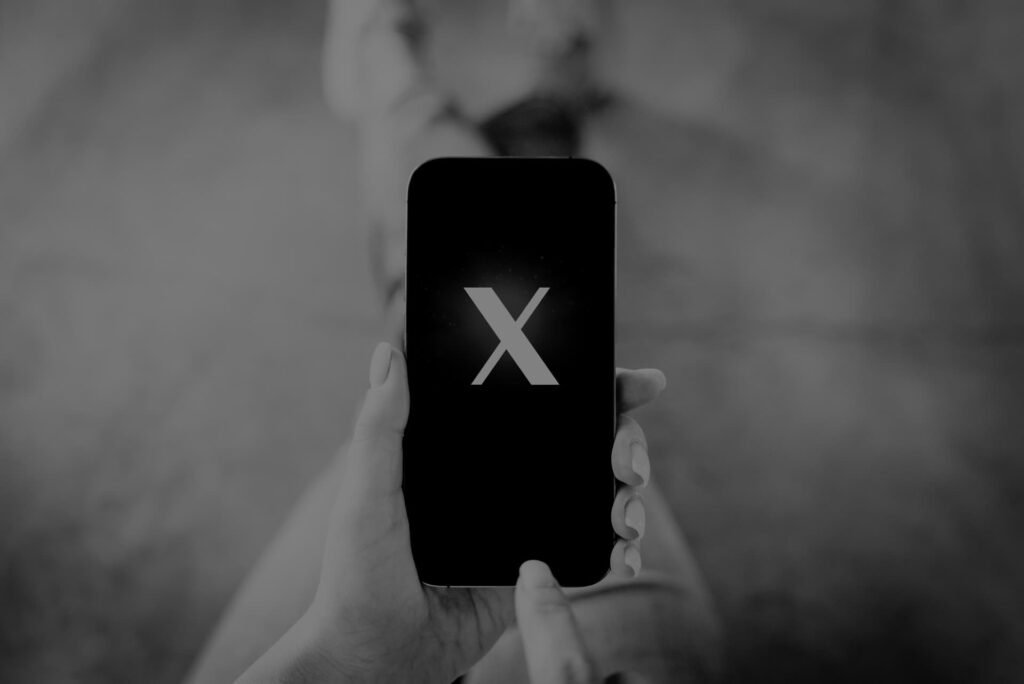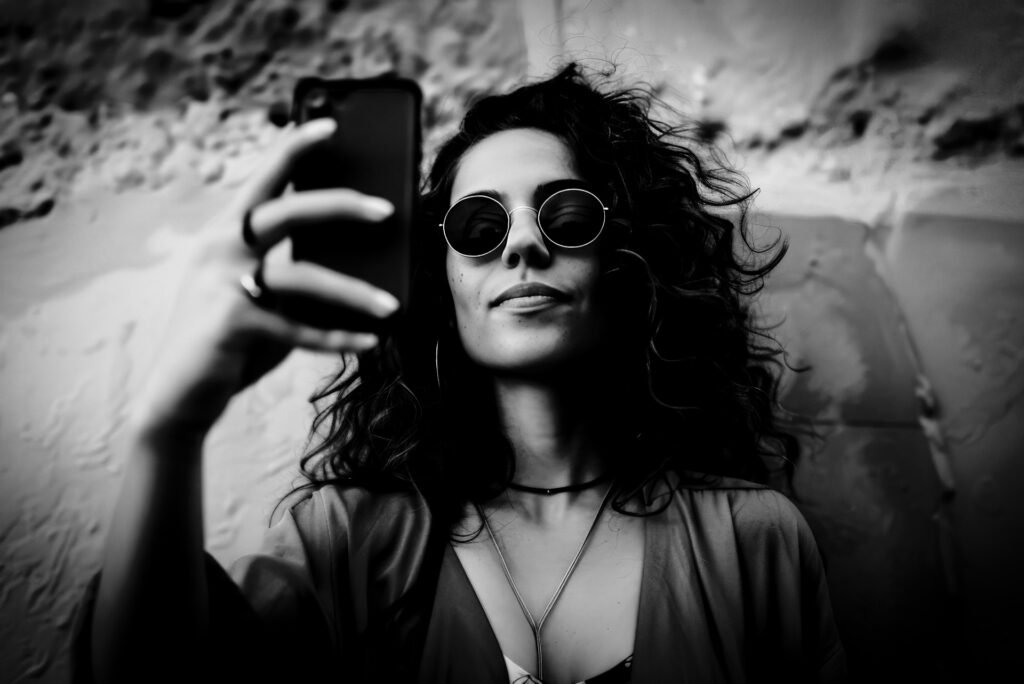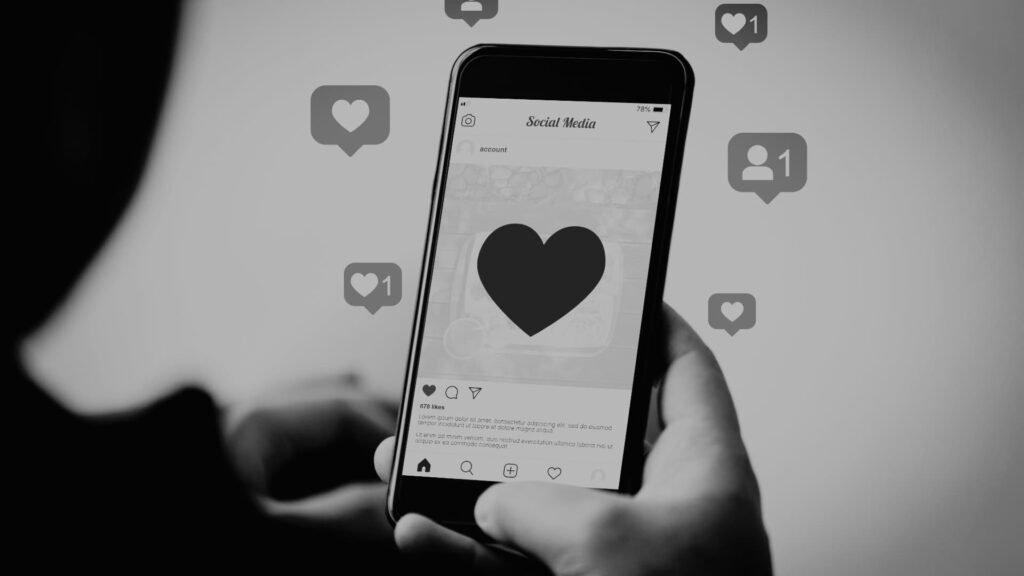Great content isn’t just about pretty pictures. It’s about understanding how every design choice, especially colour, speaks directly to your audience’s subconscious mind before they even read a single word.
When someone scrolls through their feed, they process colour 60,000 times faster than text. That split-second reaction can mean the difference between a scroll-past and a stop-and-engage moment. Your colour choices aren’t just aesthetic decisions. They’re psychological triggers that influence how people feel about your brand, whether they trust your message, and if they’ll take action.
The science behind colour psychology in marketing is well-documented. Research published in the study “Impact of colour on marketing” found that up to 90% of snap judgements about products are based on colour alone. For social media content where you have mere seconds to capture attention, this becomes even more critical.
But here’s what most businesses get wrong: they choose colours they personally like rather than colours that resonate with their audience and support their message. A calming blue might work beautifully for a meditation app, but it would undermine entirely the energy of a fitness brand’s launch campaign.
Understanding colour psychology isn’t about following rigid rules. It’s about making intentional choices that align your visual content with the emotional response you want to create. Let’s explore how to do precisely that.
How colour shapes emotion in social media content
Every colour carries psychological associations that trigger specific emotional responses in viewers. When you understand these connections, you can craft graphics that not only look good but also evoke a specific emotional response from your audience.
Red generates excitement, urgency, and passion. It increases heart rate and creates a sense of immediacy. Research from the University of British Columbia published in Science found that red boosted performance on detail-oriented tasks by as much as 31% compared to blue. This is why you see red in clearance sales, limited-time offers, and call-to-action buttons. For social media, red works brilliantly in graphics announcing flash sales, breaking news, or bold statements. However, use it strategically, as too much red can feel aggressive or overwhelming.
Blue builds trust, calm, and professionalism. It’s the most universally liked colour across cultures and genders. A study by Reboot analyzing the top 100 global brands found that 33% of these brands use blue in their logos. In social media graphics, blue is well-suited for educational content, thought leadership posts, and any message that aims to establish credibility and authority. Financial services, healthcare, and technology brands particularly benefit from blue’s trustworthy associations.
Yellow captures attention and radiates optimism. It stimulates mental activity and generates energy. However, pure bright yellow can cause eye fatigue, so most successful social media graphics use softer shades or pair yellow with darker colours for contrast. Yellow works beautifully for motivational quotes, positive news, and content designed to inspire action. It’s particularly effective on platforms like Instagram, where the feed moves quickly and you need colours that stop the scroll.
Green represents growth, health, and tranquillity. It’s associated with nature, renewal, and balance. Colour psychology research indicates that green reduces stress and evokes feelings of relaxation. For social media, green performs well in wellness content, environmental messaging, sustainability posts, and anything related to personal or business growth. It’s also increasingly used by financial brands to represent prosperity and security.
The key is matching colour to message intent. A graphic about stressful statistics needs a different colour treatment than a celebration post. Your colour choices should amplify your message, not contradict it.
Cultural colour considerations for global audiences
Colour meanings shift dramatically across cultures, and ignoring these differences can undermine your message or worse, offend your audience. If your social media reaches international followers, cultural colour psychology becomes essential.
White symbolizes purity and weddings in Western cultures, but represents mourning and funerals in many Asian countries, including China, India, and Japan. A white-heavy graphic celebrating a joyous occasion might resonate beautifully with North American audiences, but it may feel inappropriate to Asian viewers. Consider your audience demographics before defaulting to white as a neutral background.
Red means luck and prosperity in China, where it’s the colour of celebration and weddings. However, in South Africa, red is associated with mourning. In Western contexts, red can signal danger or a warning to stop. These contradictory associations mean a red graphic could be interpreted entirely differently depending on where your followers are located.
Purple typically indicates royalty and luxury in most Western countries, but it also represents mourning in Brazil and Thailand. If you’re using purple to convey premium positioning, ensure that your international audience segments receive the intended message.
Yellow represents courage in Japan, mourning in Egypt, and merchants in India. What feels cheerful and optimistic in North American markets might carry a completely different weight elsewhere.
The solution isn’t to avoid colours entirely but to know your audience. Utilize your social media analytics to determine the geographical locations of your followers. If you have a primarily North American audience with a small international segment, you can generally follow Western colour psychology principles while being mindful of potential misinterpretation. If you have a significant following in multiple countries, consider creating region-specific graphics or choosing colours with more universally positive associations, such as blue.
When in doubt, test your graphics with audience members from different cultural backgrounds before publishing. What seems evident to you might land entirely differently with someone from another culture.
Colours that boost engagement on each platform
Platform algorithms and user behaviour patterns influence which colour combinations perform best on each social media network. The same graphic can get vastly different engagement depending on where you post it.
Instagram favours high-contrast, vibrant colour combinations. The platform’s visual-first nature rewards graphics that stop the scroll through bold colour choices. Complementary colour schemes (colours opposite each other on the colour wheel, like blue and orange or purple and yellow) tend to perform well on Instagram. Research on social media engagement shows that the complexity and variety of colours in images capture greater user attention. Instagram users also respond strongly to pastels paired with one vibrant accent colour, creating an aspirational aesthetic that drives saves and shares.
LinkedIn responds better to professional, muted colour palettes. Think navy blues, forest greens, and burgundy rather than hot pink and electric yellow. Monochromatic colour schemes (different shades of the same colour) and analogous schemes (colours next to each other on the colour wheel) maintain the professional tone that LinkedIn users expect. Graphics using corporate colours with strategic pops of accent colours for data visualization tend to generate the most engagement in this environment.
Facebook engagement correlates with warm, inviting colour combinations that evoke a sense of community. Reds, oranges, and warm yellows (think sunset palettes) perform well because they create an emotional connection. Facebook’s older demographic also responds to slightly less saturated colours compared to the punchy vibrancy that works on TikTok or Instagram.
TikTok thrives on unexpected, trend-driven colour combinations. What works changes more rapidly on TikTok than on any other platform. Currently, neon accents on dark backgrounds, retro colour palettes reminiscent of the 1990s and early 2000s, and high-contrast duotone effects generate strong engagement. The key with TikTok is staying current with colour trends in popular content while adding your unique spin.
The technical consideration matters too. Test your graphics on mobile devices where most social media consumption happens. Colours that look perfect on your desktop monitor might appear washed out or oversaturated on smartphone screens. Ensure sufficient contrast ratios for accessibility (minimum 4.5:1 for standard text) to maintain readability across all devices.
Smart colour psychology for small businesses
You don’t need a graphic design degree or Adobe Creative Suite to apply colour psychology effectively in your social media graphics. Strategic thinking matters more than expensive tools.
Start with your existing brand colours and understand their psychological associations. If your logo uses blue, you’re already communicating trust and professionalism. Build your social media colour palette around these established colours while adding complementary or accent colours for variety. Canva’s free colour palette generator can help you identify colours that work harmoniously with your brand colours.
Use the 60-30-10 rule for colour distribution in graphics. Choose a dominant colour for 60% of your graphic (usually a neutral or your primary brand colour), a secondary colour for 30% (often a complementary brand colour), and an accent colour for 10% (typically your call-to-action or key information). This creates visual hierarchy while preventing colour overwhelm.
Free design platforms like Canva, Adobe Express, and Snappa offer pre-made templates with psychologically sound colour combinations. Rather than starting from scratch, select templates with colour schemes that match your message intent, then customize with your content and brand elements. These templates are created by professional designers who understand colour theory, saving you the learning curve.
Screenshot and analyze graphics from brands you admire in your industry. What colours do they use for different message types? You’ll likely notice patterns, such as blue for educational content, red for urgent announcements, and green for growth-related posts. Build a swipe file of practical colour usage specific to your industry and message types.
Test colour variations with your actual audience. Create the same graphic in two different colour schemes and post them at similar times on other days. Check your analytics to see which version generated better engagement. This real-world testing with your specific audience beats theoretical colour psychology every time. Your audience might respond differently from industry averages, and that insight is valuable.
Accessibility matters regardless of budget. Use WebAIM’s free contrast checker to ensure your text remains readable against your background colours. Adequate contrast isn’t just good for accessibility compliance, but it also improves engagement because people can actually read your message.
The power of colour consistency in branding
Colour consistency creates visual shortcuts in your audience’s brain, allowing them to recognize your content before they even register what the post says. This instant recognition is robust in crowded social media feeds. When you consistently use the same colour palette across your social media graphics, you’re training your audience to identify your content immediately. Think about major brands: Coca-Cola’s red, Tiffany’s robin egg blue, or Spotify’s bright green. You recognize these brands by colour alone.
Create a social media brand colour palette with three to five colours maximum. Include your primary brand colour, one to two secondary colours, and one to two accent colours. Document the exact colour codes (hex codes for digital use) so you or anyone creating graphics for your brand uses identical colours every time. Slight variations in shade break the consistency that builds recognition.
Apply your colours strategically but consistently. Your primary brand colour should appear in every graphic, even if just as a small element. This creates the through-line that helps followers recognize your content. Secondary colours can vary based on content type, such as blue for educational posts, green for growth-focused content, and orange for community-focused posts. The system creates consistency while allowing flexibility.
However, consistency doesn’t mean monotony. Vary your colour proportions, layouts, and which colours you emphasize while maintaining your core palette. A graphic where your primary colour dominates looks different from one where it’s just an accent, but both are recognisably yours if you’re using the same colour system.
Seasonal variations are acceptable within your colour framework. Adding autumn tones in October or festive colours in December keeps content fresh while your core brand colours maintain recognition. The key is to ensure that your primary brand colour remains prominent, even when incorporating seasonal additions.
The payoff for colour consistency compounds over time. New followers might overlook your colour system immediately, but after seeing your content repeatedly, they’ll start recognizing your graphics before reading who posted them. That’s when colour consistency truly amplifies your social media presence.
Final Thoughts
Colour psychology in social media graphics isn’t about following absolute rules. It’s about making intentional choices that align with your message, resonate with your audience, and reinforce your brand identity. The colours you choose trigger emotional responses, influence trust levels, and determine whether someone scrolls past or stops to engage.
Start by understanding the psychological associations of colours, then filter those principles through your specific audience’s cultural context and platform behaviour. Test your colour choices with real engagement data rather than assumptions. Build a consistent colour system that makes your content instantly recognizable while allowing flexibility for different message types.
The businesses that stand out on social media aren’t necessarily those with the most significant design budgets. They’re the ones making strategic colour choices that amplify their message and connect emotionally with their audience. Your colour palette is speaking to your followers, whether you’re intentionally directing that conversation or not.
Your audience is waiting for content that evokes an emotional response. Please share it with them through colours that enhance every message you convey.
Disclaimer: Social media platforms and their features are subject to frequent changes. The strategies discussed here are based on current best practices as of October 2025. Always test approaches with your specific audience and adjust based on your results.




